“If you can create what we try to create, without heavy hands, without hanging onto the rein, if you can do it with self-carriage, then it looks beautiful. It’s this word, expression, which is a dangerous word because once you put expression into it, like heightened suspension and things like that, then if you have got the wrong rider, or a rider who doesn’t ride with an independent seat, then they use their hands and that’s when you get that horrible looking, jerky dressage.”
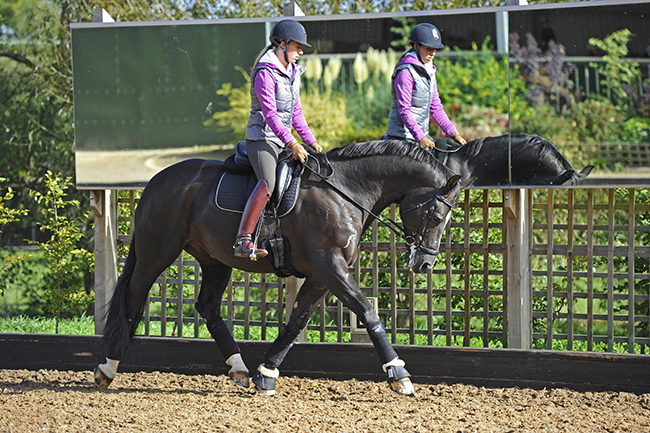
Valegro and Charlotte working at home in 2011 – pic Kit Houghton
2011 – The best one you’ve ever trained?
“I think Valegro is the best one I’ve ever trained. I think that horse has Gold Medal quality and I think Uthopia is not far behind. With Uthopia I’m up against God’s gift which is that freaking little walk, and there’s not a lot I can do about that – whereas Valegro has the whole package.
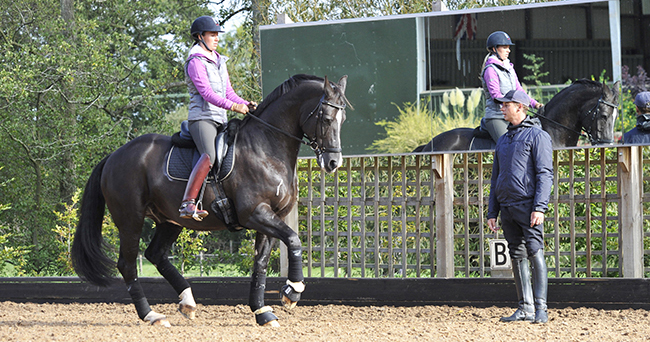
Pic Kit Houghton
Their temperaments and their trainability are really top, and the elasticity that they both have in the trot and the canter, but Valegro just has the edge with the bigger walk.”
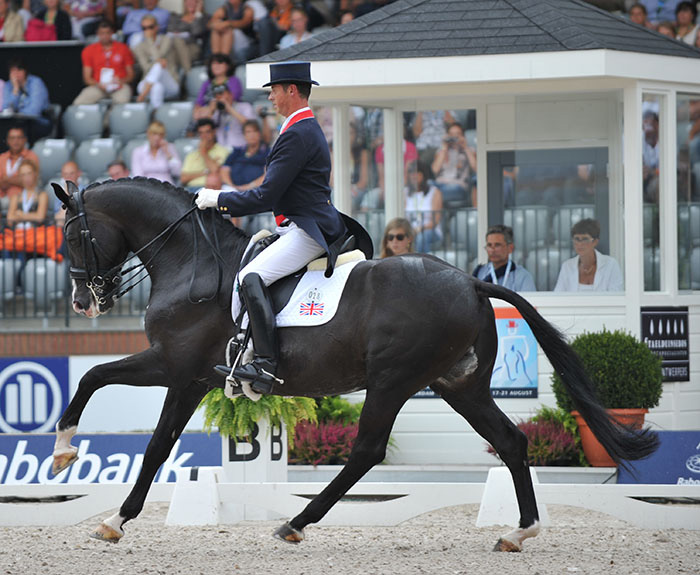
Carl and Uthopia in 2011
“I still think I am more emotional about Charlotte and Valegro because I think that is so special, she is so young. I’m glad that before I die I’ve made a decent score with Uthopia, but for me to see Charlotte come through, that for me, was just as pleasant.”
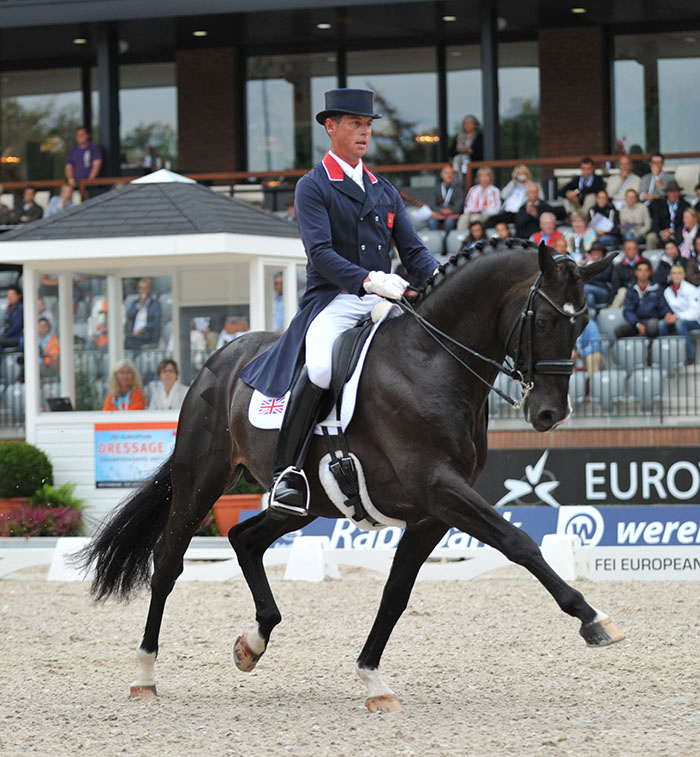
And the score of ten for Uthopia from all judges?
“I thought for a minute that there must be a dog in the arena, or a bird had landed, everyone was laughing. I didn’t know I had seven 10s.”
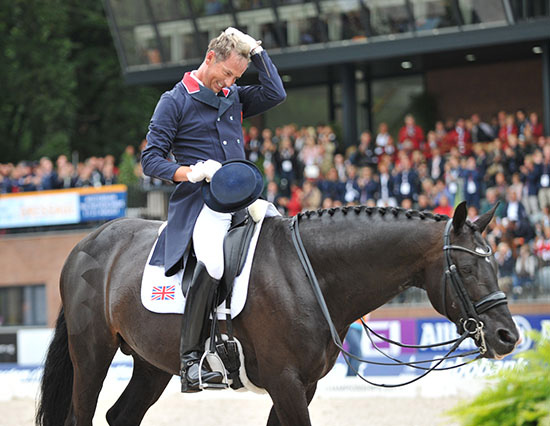
Carl rubs his head in disbelief at the seven 10s, it was a Championship at the time when seven judges were used and every judge gave the extended trot a 10. Everyone in the crowd, which was largely Dutch and a full house, gave a collective ‘aah’ of approval which was quite a loud noise as it was a big crowd.
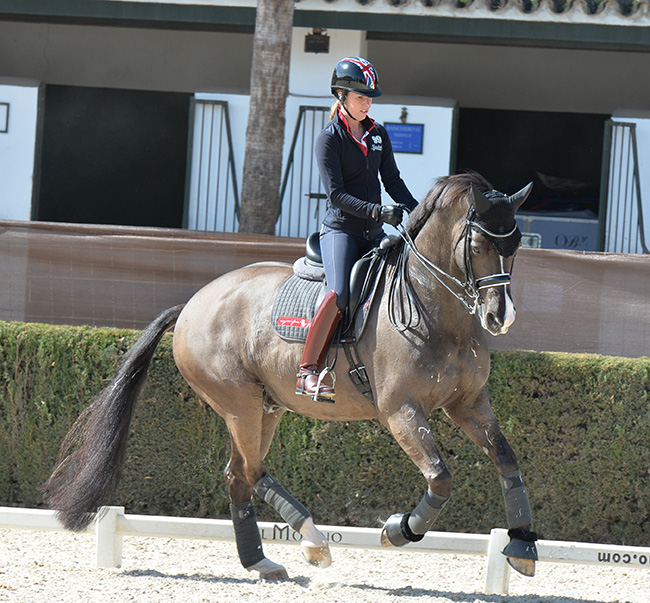
Working…
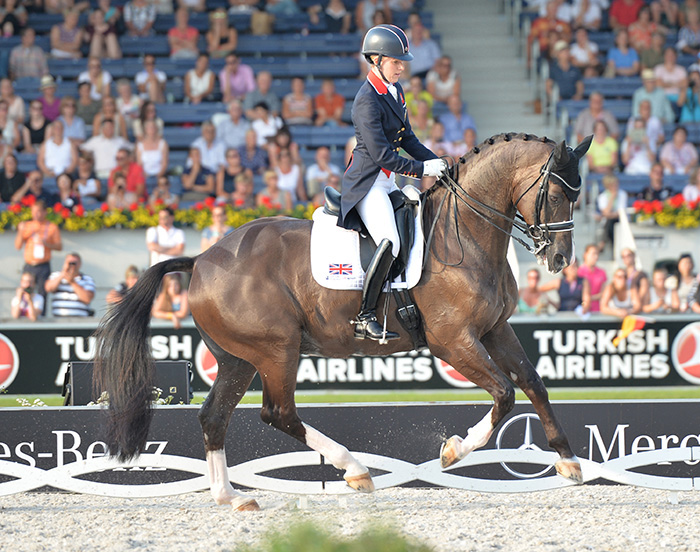
Competing
2016
Can we talk about positive tension? It looked to me, when we have been watching Charlotte working Valegro this week, that the incredible quality that she was showing was positive tension, he was electric, he was alive, he was never stressed, but he was electric, and that’s a very weird concept…
“Where it tips over, that positive tension, is if you let the horse get strong in the bridle. Once you let the horse become heavy on the hand and strong in the bridle, it’s not positive any more, because then there is a block.
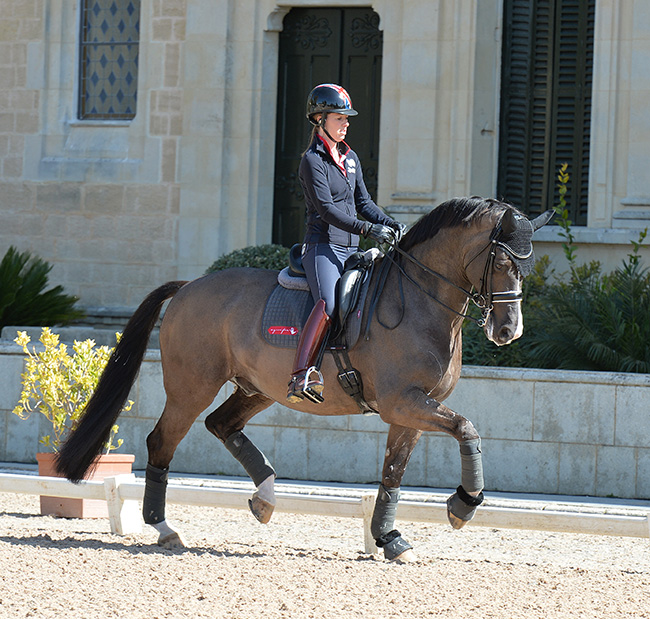
If you can create what we try to create, without heavy hands, without hanging onto the rein, if you can do it with self-carriage, then it looks beautiful. It’s this word, expression, which is a dangerous word because once you put expression into it, like heightened suspension and things like that, then if you have got the wrong rider, or a rider who doesn’t ride with an independent seat, then they use their hands and that’s when you get that horrible looking, jerky dressage. It is something we really work on, to be able to create it, without going over-board.”
Did you have to create it with Valegro?
“Of course. Anyone who remembers him as a four, five or six year old, he had a very strong, Cobby, trot, there wasn’t the sort of power and expression he has now. He has a hanging moment now and he looks like an incredible mover, but back then, he had all the mechanics, but he didn’t have the lightness, he was always a bloody strong horse. He always had the hock action, that I don’t believe you can change.”
Can you talk a little about self-carriage?
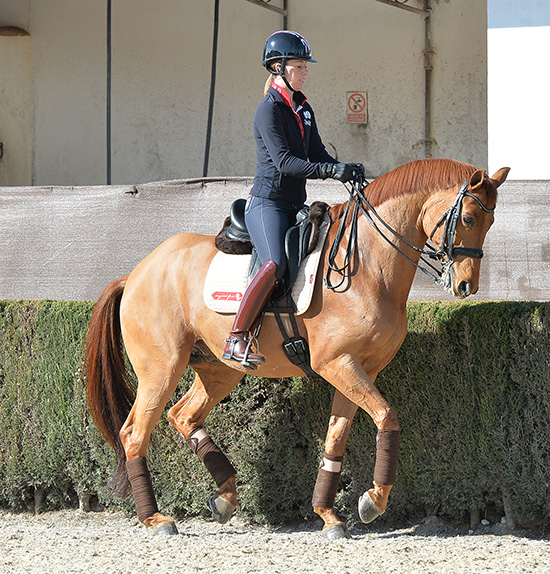
Charlotte demonstrates, working with Barolo, a young Grand Prix horse at the time
“Self-carriage is really easy to see. It’s that tension into the hand that we were just talking about with Valegro, that really tells it – it’s the first place you see it through the whole of the top line of the horse. The best thing you can do for self-carriage is the give and re-take of the reins. It is amazing how you forget to do that when you ride on your own.
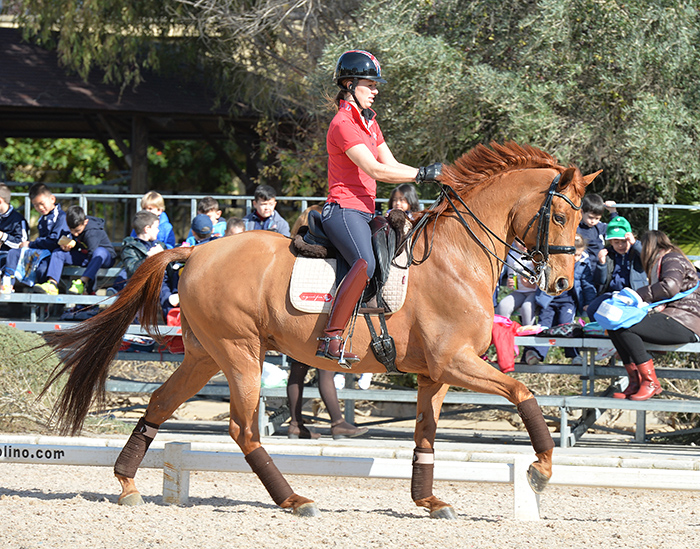
That constant giving the hand, taking, giving, taking, making sure that the outline is stable, the mouth is soft. You only have to look at the mouth to know how it is working, the horse is carrying its own head and neck. People that ride on their own, it can be something that they forget they are doing, people put in too much power and that’s why they find self-carriage difficult, and I always think you’ve got to create a balance and then put power in, that way around.

“We were always told, particularly through the German system, hind legs, hind legs, hind legs, ride him more forward, ride him more forward… and when you look around the world, there are very few riders with an independent seat, and if you don’t have that independent seat, then finding self-carriage is one of the most difficult things, and you should never forget it, really. But balance first.”
I’m not sure if it is chicken or egg, but the riders who sit in the middle of the movement, in the middle of their horse are the ones with the self-carriage…
“Exactly, they have self carriage themselves.”
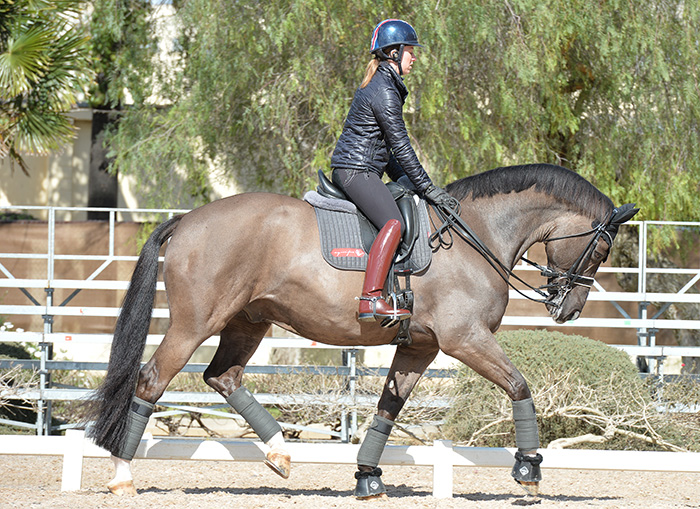
And the riders who sit behind the movement, particularly the ones with their shoulders back, they are never going to have self-carriage….
“No, because they are driving the horse down in front. If they sit too strong, behind the vertical, then they are pushing the horse down, through and into the hand. I was told by ‘Rocky’* when you go forward you bring your body forward and when you want to come back, you bring your body back. And it is amazing how most of us do the opposite to that. He always said to me, when you piaffe, you should be sitting over your knee, not sitting on your backside. Charlotte does that naturally, I have to remind myself to do it because I want to be too strong, but that is a really interesting little tip he gave me because piaffe, you get the feeling that you are driving, but in fact you should be sitting over your knee to let the horse use its back.”
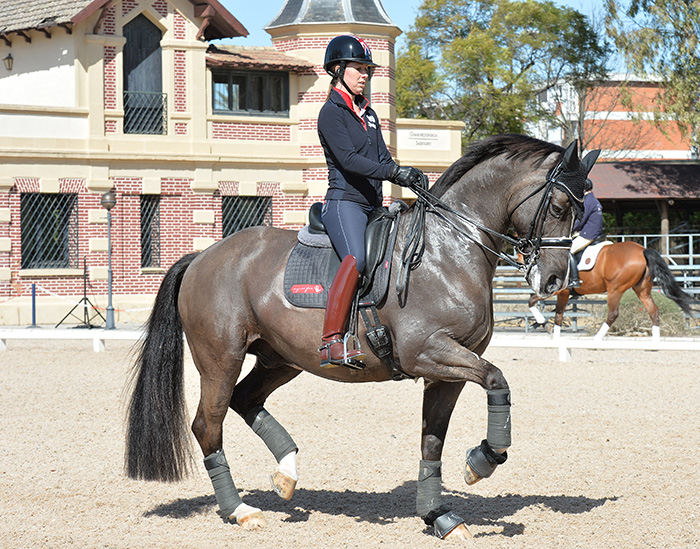
“And Harry Boldt, you know Harry taught me when I was at Dr B’s and already then, he was riding Rembrandt because Nicole had broken her arm, he moved with the times. He just developed as the evolution of it has. It wasn’t abusive. A good rider can make impulsion and expression without being abusive.”
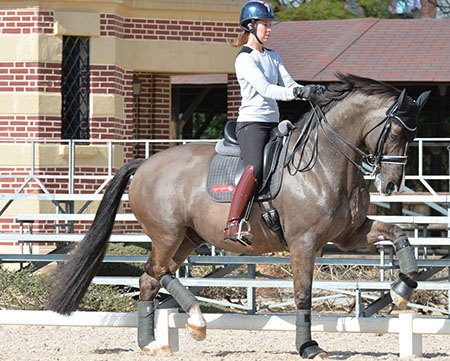
Words from Carl at a Clinic in 2018
“Move! Movement in stillness. You’re trying to be still and elegant, don’t make yourself stiff and rigid. You’ve got to have movement within the stillness and that should help you stop being stiff.”
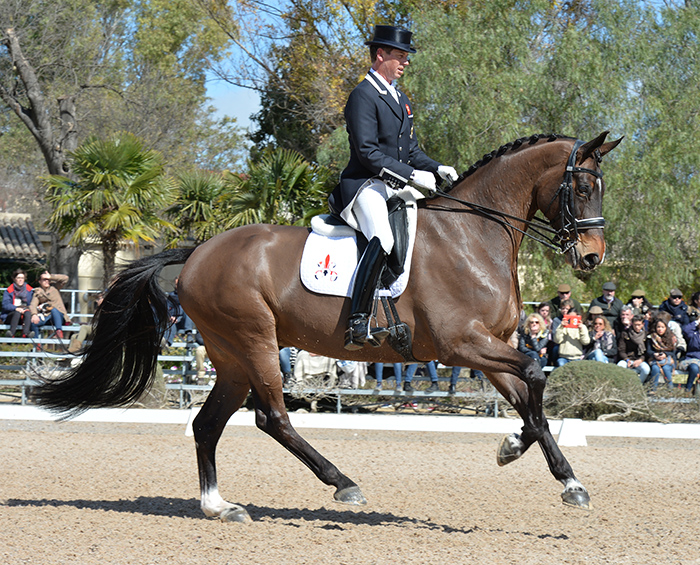
NipTuck – this pic was taken early in 2016…
“I know physically it is demanding for him, he’s got a long back, his hind legs were naturally always out, he didn’t really have a walk because he was so tight, he didn’t really have a canter because he was so tense and always trying to run off – and his trot had to be developed. Everything that goes in a Grand Prix has helped make him a better horse. Once he learnt a canter pirouette, he started to take the weight back in canter, once he learnt to passage, the trot started to develop because before he had no lift, no nothing. It has just been a great lesson for me and I am delighted that I have been proved wrong, because it helps you in so many ways. It helps you as a trainer, because instead of saying to somebody, oh your horse is not good enough, now I say, well actually I tried this, I tried that, let’s see if we can develop something with your horse. Obviously on a personal level, every horse I get up to this level is a challenge for me, and that’s what I do it for. I love the opportunity to get a horse up to this level.”
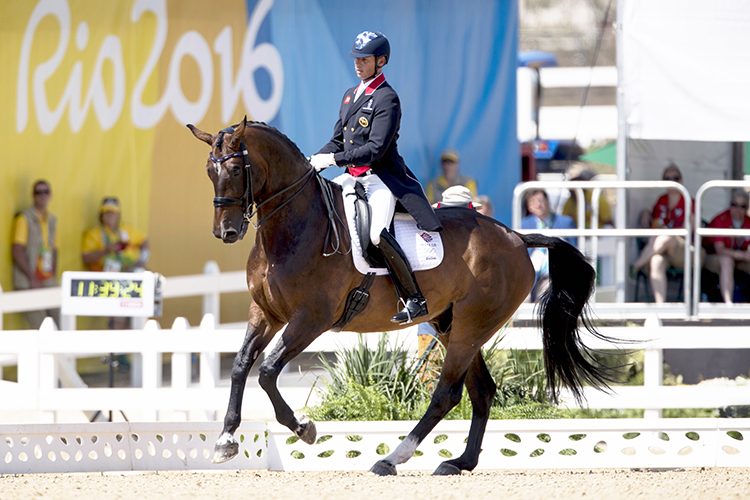
Sitting on Barney, I’m riding presence, going round today, you are sitting behind a neck like that, and he starts to go, and when he’s more relaxed and starts to use his body like he was today. In the Grand Prix he was so nervous, but today when his body moves, his hind legs don’t look so much not part of him. Honestly you sit there, and he is so lovely in my hands, when I have him really light and on his hind legs, it’s just the best feeling, the feeling of changing something…”
“If we all trained with the rules and the blocks of the training scale… I haven’t been able to put those blocks in place with that horse. The contact came as he has got more on his hind legs, some things have been back-to-front a little bit with him. That’s alright.”
“That’s what makes me laugh when you get his critics saying, he should be more sitting, he should be this or that… Well, I started with no walk, no trot and no canter, that’s what I started with, Valegro started with all three paces.”
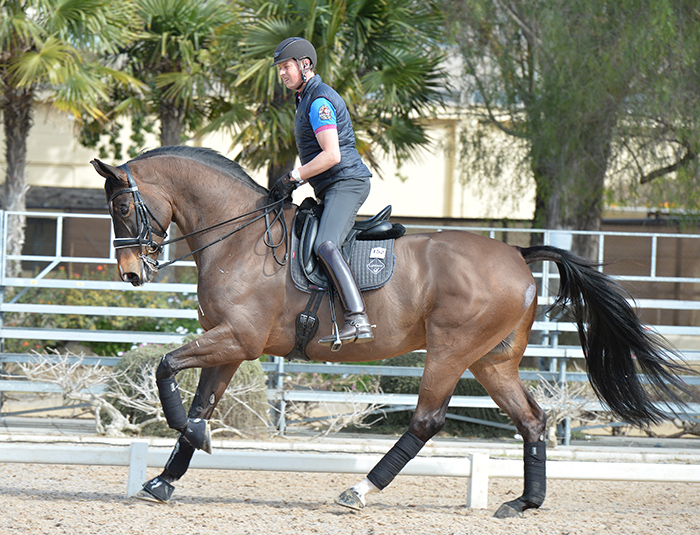
“That’s training, it does show that you can create something in every horse that has the willingness to work – it won’t be of the same quality, but it is something you can still make.”
Conclusion
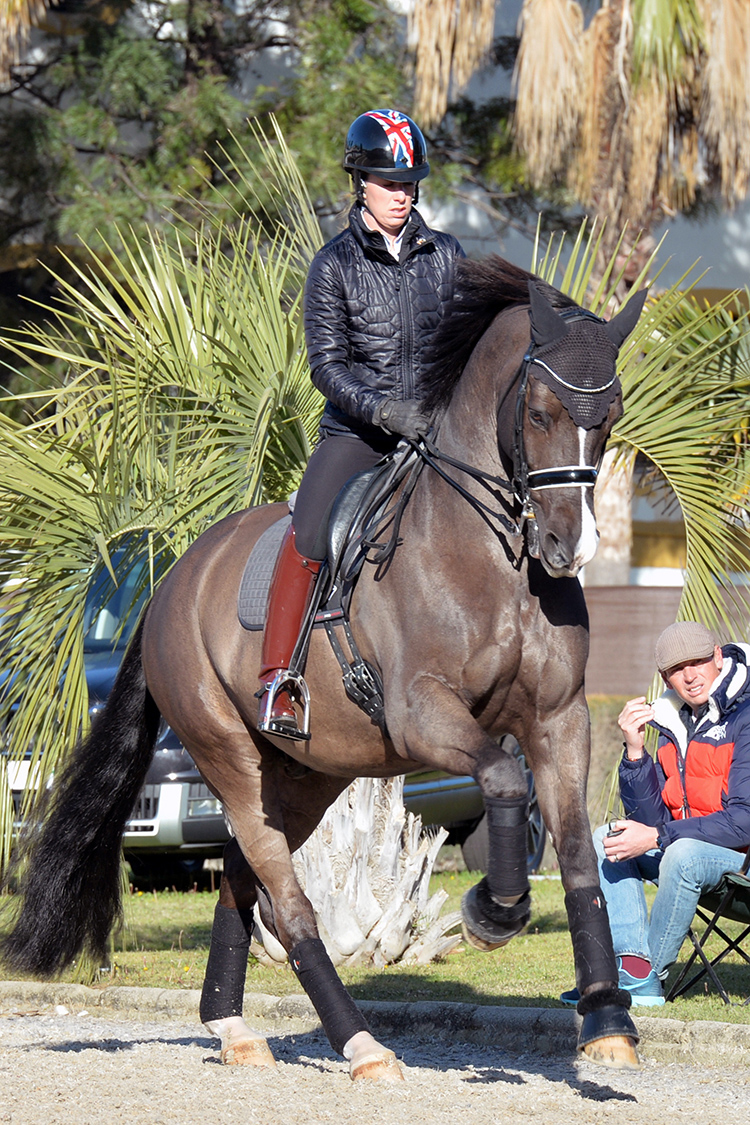
How did you reach this state of beatitude where you don’t care if you win or not… you weren’t sitting under a tree meditating…
“I don’t know when it came on me, no light bulb moments, I think it probably has to do with Nip Tuck because I had to deal with the criticism, which was very often right. I had to learn to stop being possessive about my own horse, because if someone tells you your horse isn’t good, you want to give them a thump. Then I thought, get over yourself, if someone says your horse has no extended trot – guess what, they’re right. No he hasn’t, your right. Accept it. But you couldn’t say the horse wasn’t a worker, and you couldn’t say he didn’t become the best he could be. And I thought I’m going to stop worrying what other people think about because let’s face it, in dressage there are three people who win a medal, and I’m lucky enough to have been one of them, once, but I also realise how hard it is to be one of those top three. There are lots of talented riders out there, who will go to the World Games with amazing horses and they won’t get a medal. So if you get that opportunity once in your life, which I’ve had, I’m very happy to rest on that, and I’ll be very happy if it happens again, as well, but no desperation.”
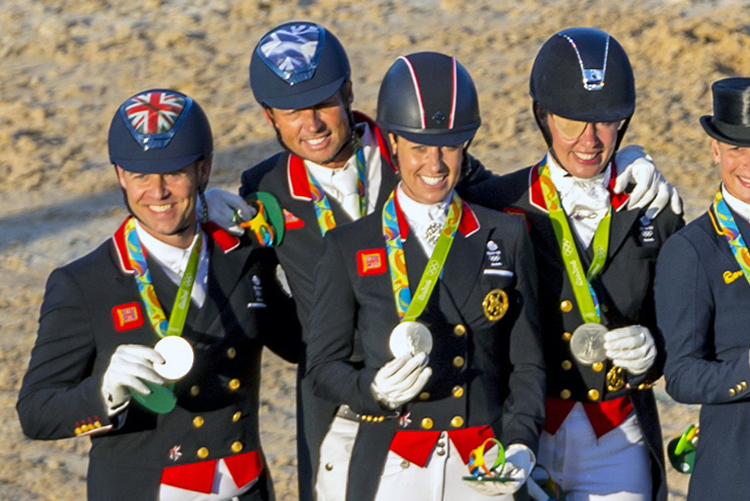
Pic Arnd Bronkhurst
Want to breed your own dressage star in Australia? Go to www.ihb.au and select from the best bloodlines Europe can offer…
Vitalis
Floriscount



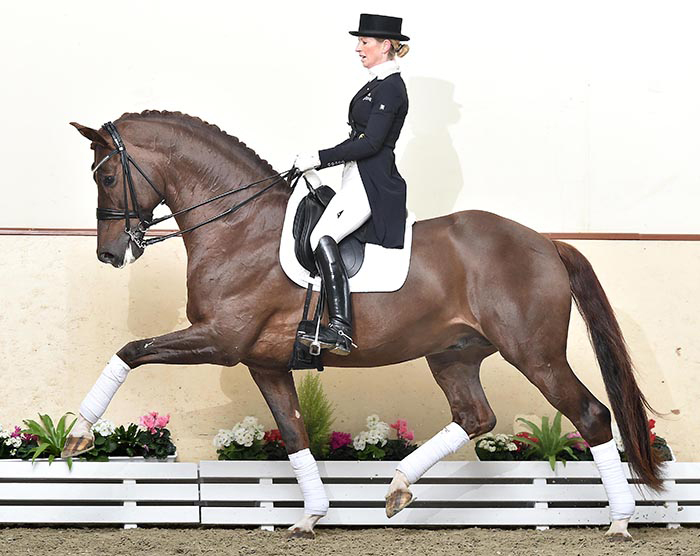
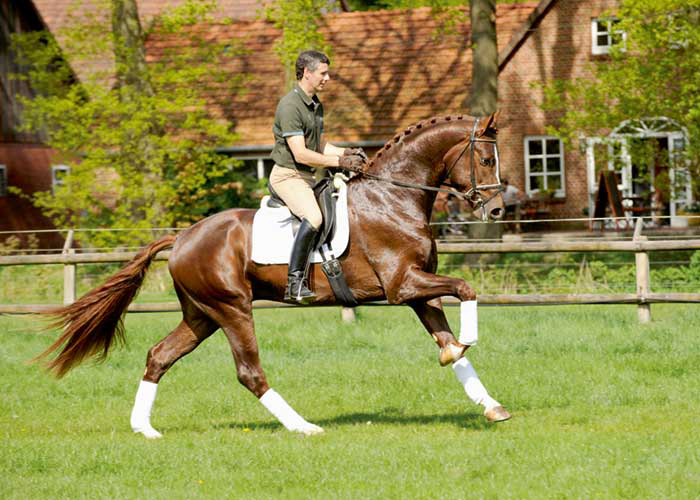
He is on such a higher level mentally, emotionally, a pleasure to read.
Carl is exceptional. Just wish we had more coaches like him in Australia.
Always goes back to read Carls books when I get stuck in my riding. A great horse and sports man!